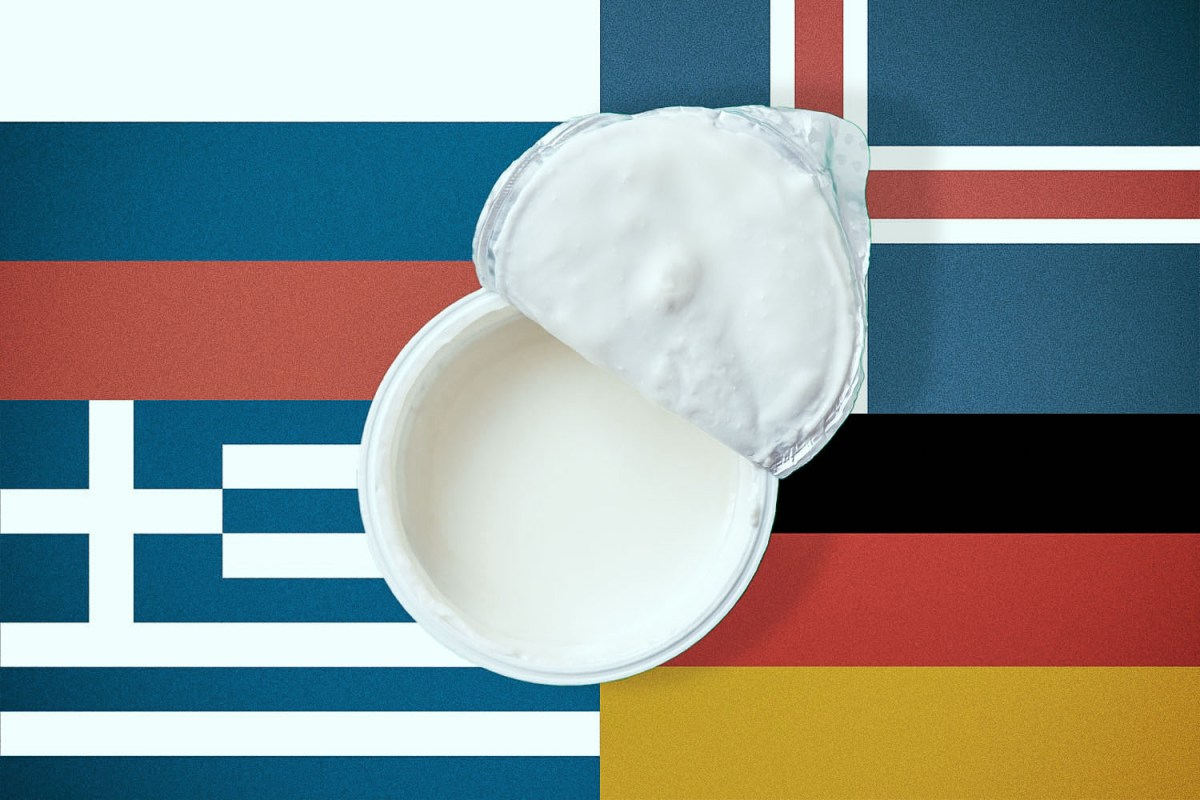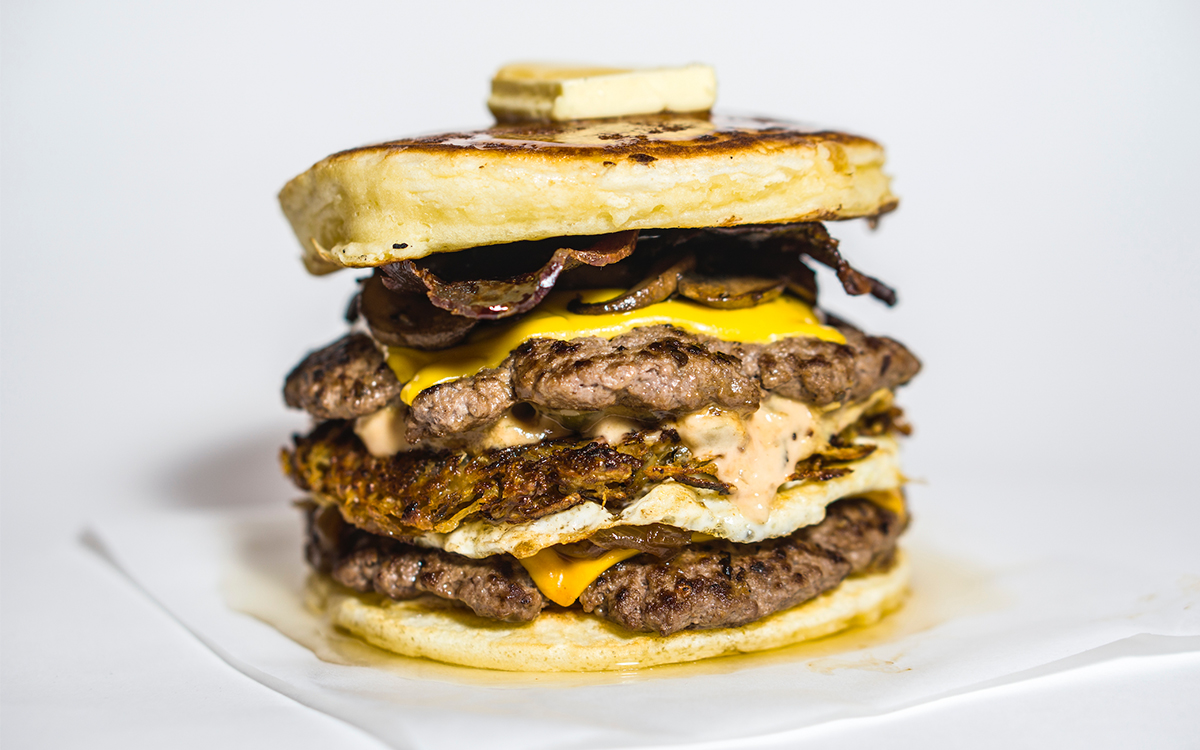As a distance runner with a voracious appetite, it should come as no surprise that bread — whether in the form of Ethiopian ugali, Italian focaccia, Japanese milk bread or French baguette — is always one of the first foods I taste whenever I touch down in a new country. Every culture does it differently, and I’ve never met a fresh bread product I didn’t like.
But my second favorite category to hit while on the road is less predictable: yogurt (and its relatives). Until I spent a year gallivanting all over the globe, my yogurt world was admittedly small. As a frequent consumer of plain, Greek and frozen varieties, plus squeezable in my younger years, I assumed that the flavor options at my fingertips were as wild as yogurt got. (Wild is not inaccurate: Yoplait currently sells Starburst-, Gushers- and Skittles-flavored yogurts. Apparently there’s a market for them somewhere.)
My travels, though — once I got deep and curious enough — indicated I’d been missing out on a whole lot. There’s skyr from Iceland, labneh from the Middle East, lassi from India and many more local spins on what we know as yogurt, and what The Encyclopedia of Food Sciences and Nutrition defines as “a product resulting from milk by fermentation with a mixed starter culture consisting of Streptococcus thermophilus and Lactobacillus delbrueckii ssp.”
Maddie Alm, a registered dietitian, the owner of Fueling Forward, and a professional runner who finished 12th in the 5,000 meters at this summer’s U.S. Olympic Track and Field Trials, has good news for the yogurt lovers of the world. Regardless of the country it comes from, or the exact form it takes, Alm says, yogurt foods are “a great source of natural probiotics that can help balance the good bacteria in the gut and make sure you are digesting and absorbing your nutrients efficiently.”
They also contain abundant protein and leucine, an amino acid that enhances muscle recovery and muscle protein synthesis, along with high levels of calcium, which plays a role in bone health and heart contractions, and vitamin B12, which is involved in energy production and blood health. Alm considers yogurt “a great snack to have before bed to help boost overnight recovery and sleep quality.”
All that said, the dairy aisle is one of the most intimidating sections in the grocery store. How do you make sense of all that choice? And how can you make sure that you’re making the right choice? To that end, it helps to have a working, international knowledge of yogurt’s heaviest hitters. Below, I’ve laid out five yogurts you should know.

Fan-favorite Greek yogurt is made when the liquid whey is strained off of regular yogurt (a.k.a. fermented milk). As a result, it’s thick, creamy and spreadable, and also higher in protein than many other types of yogurt. Greek yogurt works well in dips, marinades and even as a healthy alternative to butter and oil in baked goods. Popular stateside brands include Fage, Oikos and The Greek Gods.
Skyr, the Icelandic yogurt that’s nearly synonymous with Siggi’s in the United States, has a similar consistency to Greek yogurt: more reminiscent of pudding than of runny yogurt. But whereas Greek yogurt is essentially double-strained yogurt, skyr differs with its inclusion of heirloom Icelandic cultures in addition to dairy milk, and requirement of nearly four cups of milk for each cup of skyr yielded. Both varieties are super high in protein.
Labneh, hailing from the Middle East, is also comparable to Greek yogurt, and no wonder: both are made when yogurt is strained until it’s thick, smooth and luscious (not to mention protein-rich). Many people liken labneh’s texture to that of cream cheese. What differentiates labneh from Greek yogurt is that it’s frequently jazzed up with ingredients such as olive oil, lemon juice and fresh or dried herbs, and then eaten as a dip or spread. You’ll rarely go wrong when getting your labneh fix from a Middle Eastern restaurant.
Kefir is a drinkable yogurt that’s made by adding kefir grains — not the grains you’re probably thinking of, these contain yeast and lactic acid bacteria — to milk, typically from a cow or goat. The drink originated in Eastern Europe and Southwest Asia, and its name comes from a Turkish word that translates to “feeling good” after a meal. Lifeway, Wallaby, Maple Hill and Green Valley are big players in the U.S. kefir market.
Lassi, with Indian roots, is another drinkable yogurt that contains a yogurt (or buttermilk) base with added water and optional flavorings. It’s typically frothy and creamy, and it can either be salty, sweet (as in mango, banana or strawberry) or savory (with saffron or beets). Many people find lassi to be a soothing complement or end to a spicy meal. While you can find lassi in the refrigerated section of a grocery store, it’s hard to beat a fresh one from an Indian restaurant.
Which yogurt relative is best? That’s a matter of personal preference and nutritional needs. If you’re looking for high protein, Greek yogurt, skyr and labneh have you covered. If you want something to sip, go with kefir or lassi. For a good dip, try labneh or Greek yogurt. Whichever one you choose, take Alm’s suggestion to round out the meal or snack by combining the yogurt with a carbohydrate such as fruit, cereal, oats or granola — or, of course, pita, naan, or chapati. That’s to say, whatever type of bread calls your current location home.
The Charge will help you move better, think clearer and stay in the game longer. Subscribe to our wellness newsletter today.























